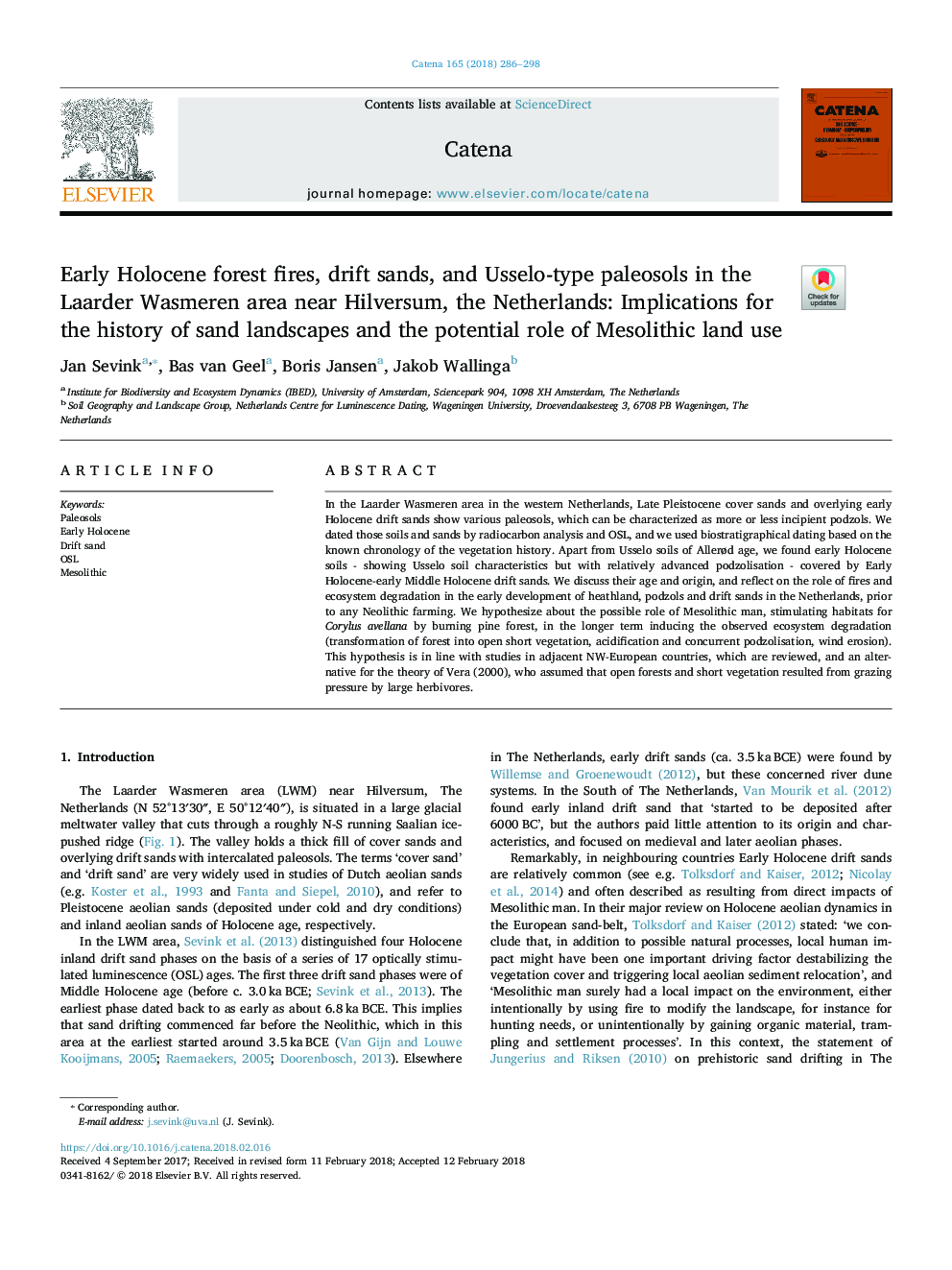| Article ID | Journal | Published Year | Pages | File Type |
|---|---|---|---|---|
| 8893599 | CATENA | 2018 | 13 Pages |
Abstract
In the Laarder Wasmeren area in the western Netherlands, Late Pleistocene cover sands and overlying early Holocene drift sands show various paleosols, which can be characterized as more or less incipient podzols. We dated those soils and sands by radiocarbon analysis and OSL, and we used biostratigraphical dating based on the known chronology of the vegetation history. Apart from Usselo soils of Allerød age, we found early Holocene soils - showing Usselo soil characteristics but with relatively advanced podzolisation - covered by Early Holocene-early Middle Holocene drift sands. We discuss their age and origin, and reflect on the role of fires and ecosystem degradation in the early development of heathland, podzols and drift sands in the Netherlands, prior to any Neolithic farming. We hypothesize about the possible role of Mesolithic man, stimulating habitats for Corylus avellana by burning pine forest, in the longer term inducing the observed ecosystem degradation (transformation of forest into open short vegetation, acidification and concurrent podzolisation, wind erosion). This hypothesis is in line with studies in adjacent NW-European countries, which are reviewed, and an alternative for the theory of Vera (2000), who assumed that open forests and short vegetation resulted from grazing pressure by large herbivores.
Keywords
Related Topics
Physical Sciences and Engineering
Earth and Planetary Sciences
Earth-Surface Processes
Authors
Jan Sevink, Bas van Geel, Boris Jansen, Jakob Wallinga,
